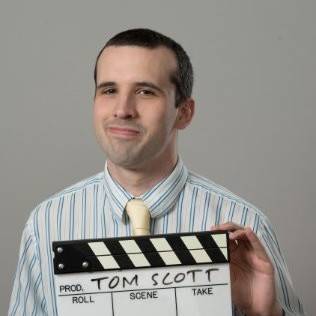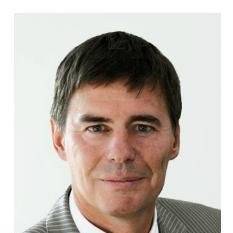I fly a lot for work and have become an expert at analyzing airport departure boards. I have noticed a major between the departure boards in European airports and the departure boards at airports in Canada.
In Europe, departures are arranged chronologically. The flights about to part are at the top of the screen whereas later flights are at the bottom. As flights take off, they are removed from the board and the other flights all shift up.
For example, to the right is a photo that I took at the international airport in Brussels when I spoke at a conference there in January.
When I traveled to Canada last summer, I flew from, or to, Montreal, Ottawa and Toronto. At each airport, I noticed that the departure boards were organized differently from those in Europe. For example, the next photo is one that I took at Montreal’s Pierre Elliot Trudeau International Airport. Do you notice the difference?
In Canada, they organize the departure boards alphabetically by destination. This board also provides the logo of the airline company instead of just the call letters as in the photo above.
Between the two, I prefer the Canadian one—and no, not because I am Canadian. It is because I can find my flights a bit faster when I am in Canada.
If you randomly stopped 100 people in an airport and asked them when their flight was departing, many of them would have to check their tickets to be sure of the precise time. But if you asked those same 100 people where they were flying, all 100 could tell you immediately.
At the Canadian airports, I find it a bit easier to locate my flights. Even when there are multiple flights to the same destination, as is the case with London/Heathrow in the photo above, I can quickly narrow the field and find my flight. The three flights to London/Heathrow at 22:25 were the same flight, just different flight codes. What was odd—and not helpful—is that they placed the 20:05 Air Canada flight to London/Healthrow in the middle of those other flights and out of order chronologically.
In a completely unscientific study, I watched passengers in both airports to gauge how quickly they could find their flights. The amount of information was about the same in both locations. The screen in Brussels above is bigger than the one in Montreal, but there were more screens in Montreal. It appeared to me that people spent less time searching in Montreal than in Brussels.
The lesson, when it comes to presenting, and particularly slide presentations, is that you want to make your ideas as easy to understand as possible. Have one main idea for each slide; don’t use too much text; eliminate distracting visuals and colours; bring bullet points in one at a time; give concrete examples; highlight the relevant data in a chart or graph; don’t flip through the slides too quickly.
Every time you present, you take your audience on a journey. Make sure they reach their destination!


















Might be good to devote a bit more time to your posts to avoid word mistakes and typos as they reflect poorly on your preparation.
Thanks for the helpful, if curt, comment, Dean. I appreciate your taking the time. I went back over the post and picked out four typos. Not good but now corrected.
I loved this comparison – enjoyable read, thank you
Thank you, Julia. Glad you enjoyed it.
Great list of tips at the end, John. I strongly agree about bringing in elements one at a time, so they support what you’re saying and they don’t let people get ahead. (Although there’s a possible exception if you “show cues before content”.)
You mentioned not flipping through slides too fast. That’s a bugbear of mine. It’s so frustrating when presenters do that!
(By the way, with the photos in your post, I really struggled to read them, and I imagine many other people might too. If a bigger copy appeared when they were clicked, that’d make them much easier to see.)
Anyway, it’s clear you’ve spent a lot of time in airports recently! So I’m very glad your venture’s really taking off. (No pun intended!)
Thanks for the good wishes. Craig. I don’t see the “cues before content” as an exception. Rather, if the cues are brought in properly, they will have the audience following along until the point is revealed — like an audience does in an intriguing murder mystery movie until they discover the killer at the end. A bit of intrigue is good if it is done properly.
Thanks also for the head’s up about the photos. I thought I had linked them to the original media file, but it seems that WordPress has made some changes to the blogging platform. I have located the proper link button and rectified the situation. You should be able to see the photos fine now.
Great comparison and lessons from simple things. Thanks John
Thanks Velan. Glad you enjoyed the post!
Interesting post. i noticed the same goes for USA airports.
I see that you prefer the alphabetical order for the cities, but then switch to chronological order for the 2nd ranking ;-), however, (you) fellow anglosaxons use both alphabetical order for the cities and then for the Airline (IATA (based in Montreal, btw, as you surely know) code which with the number make up the flight number appearing in the ticket): AA, AC, BA, IB…
Cheers,
Javier
Thanks for the additional information, Javier. Having worked in the UN system for many years, I have been to several offices but never the IATA office in Montreal.
(professional deformation) a clarification: ICAO (OACI in French/Spanish), also based in Montreal, is the agency belonging to UN that takes care of harmonizing aerospace regulation and promote air transport; on the other hand IATA is a trade association (thus, not linked to UN) of a number of airlines. [btw, IATA also has an office in Geneva ;-)]
Regards,
Javier
Of course. As I was writing my response, I was thinking ICAO (International Civil Aviation Organization) but as you had put IATA in your message, and I was looking at it, that is what came out. Ah, the brain. And yes, in Geneva we do not live far from the IATA office.
Glad we got that sorted out!
Well observed. I like these “little” differences between countries. What I find remarkable when flying is the tradition that announcements of flights always start with the flight number. And I ask myself: how many flight customers actually know their flight number? I guess it is less than 1%. So, why don’t they just skip this part?
Interesting how long traditions stick, even when not useful for anybody….
Thanks, Volkmar. It would also help (in some airports) if they raised the volume or got a new sound system so that the messages were clear! For the announcement itself, I have sometimes heard “Passengers flying to [DESTINATION] on [AIRLINE NAME] Flight No. [12345] are kindly requested to …”. That’s not bad. At least if people here their destination city first, they will listen closely and not miss the rest of the message.
haha I always use the flight number, maybe I’m the 1% but I doubt it! Flight times change all the time due to delays. Especially in busy airports with multiple flights going to your destination. It’s so much easier just to remember your flight number.
Good for you, Christopher. I try to remember my flight number, and usually do, but it does elude me on occasion.
Unfortunately, it seems like Toronto has joined the Europeans and started doing this the silly way. I’m with you, I usually only have a vague idea of what time my flight is leaving, but I always know where I’m going. Frustrates me to no end at Pearson now.
Thanks for the update. I’ll be flying in and out of Pearson in August. It’s such an easy fix and a quick win for everyone, I don’t understand why they don’t do it.
Good to know 🙂 I wish I’ve read that post a week ago before my work trip to the US. I would’ve certainly saved a few seconds to decipher this difference in the US screens (which is the same as in Canada) versus those in Europe. As I travel more often in Europe, I searched my flight by time, not by alphabetical order. So at first glance , the US screens appeared quite chaotic before I realized it myself. And now reading your post, I was like: “Ahhh, that’s true!” 🙂
All in all, it depends what one is used to, in order to switch quicker from one way of doing something to another.
Thanks for sharing!
Thanks for the comment, Mariyana. Much appreciated. Safe travels!